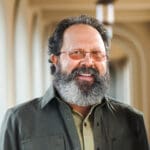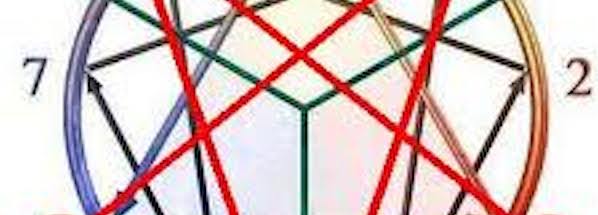Dear Dan, I recently began a new relationship with a spiritual director who claimed to be committed to the teachings of the Church. She is a local Benedictine sister who is very nice and seems to be sincere. However, in our second session she asked if I would be interested in using an ancient tool of 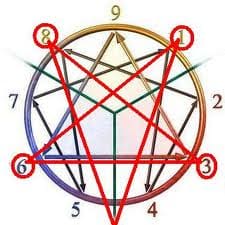 spiritual wisdom known as the enneagram to help me in my spiritual progress. I recall reading about this tool in a Vatican document called “Jesus Christ – Bearer of the Water of Life.” That document says that the use of the enneagram “introduces an ambiguity in the doctrine and the life of the Christian faith.” I am very concerned. Should I abandon this relationship? Can I trust her in other matters if she uses the enneagram?
spiritual wisdom known as the enneagram to help me in my spiritual progress. I recall reading about this tool in a Vatican document called “Jesus Christ – Bearer of the Water of Life.” That document says that the use of the enneagram “introduces an ambiguity in the doctrine and the life of the Christian faith.” I am very concerned. Should I abandon this relationship? Can I trust her in other matters if she uses the enneagram?
Dear friend, it seems that you already know the answer to your question. I think the best course of action is to provide you with more food for thought about the enneagram. Fr. Mitch Pacwa SJ is a scholar on this topic and he offered this article for your review:
A Catholic Perspective on the Enneagram
In America and abroad the enneagram is a very popular system of personality types. Strictly speaking, the enneagram is a circle marked with nine points (ennea means “nine” in Greek, and gram means “line drawing”). Inside the circle two figures connect the nine points, a triangle and an oddly shaped six pointed figure. However, by “enneagram” most people mean a personality typology system based on this drawing. In workshops people learn that only nine personality types exist and that every person fits into one of them. Each type is a personality compulsion, a wrong or even “demonic” way of behaving. Once a person identifies his or her type (usually classified by a number on the enneagram), then he or she can learn how to improve or avoid getting worse spiritually.
The enneagram is particularly popular among Catholics, with parishes and retreat houses offering workshops across the country. Rarely are teachers or participants aware of its occultic origins, though this should be a source of real concern for the Christian Church. Echoes of a false, gnostic theology are heard in enneagram teachings, though its occult roots are unknown. The lack of scientific research into the enneagram system leaves it open to abuse even by people who reject or know nothing of its occult background. This article will examine three aspects of the enneagram: its occultic roots, its gnostic theology, and its lack of scientific support.
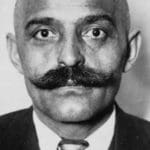
The man credited with bringing the enneagram to the West is Georgian national, George Ilych Gurdjieff. His family wanted him to study for the Orthodox priesthood, but he was fascinated with the occult: astrology, mental telepathy, spiritism and table turning, fortune telling, and demon possession. He would listen neither to his priest’s warnings about the occult, nor did science explain them. He pursued these occult “sciences,” travelling throughout central Asia, the Mediterranean basin, Egypt, Tibet and India. Among Islamic mystics, called Sufis, Gurdjieff learned the enneagram. The enneagram had been used for fortune telling, as a symbol of personal transformation and as a mystical understanding of the cosmos. There is no evidence to indicate that Gurdjieff knew about a personality system.
In addition, Gurdjieff learned about a perpetual spiritual hierarchy headed by a spirit who communicates divine revelations through other spirits to maintain planetary harmony and evolution. The Sufis taught that faith arose “from understanding” which is “the essence obtained from information intentionally learned and from all kinds of experiences personally experienced.” Only understanding leads to God and only experience and information make one acquire a soul. Obviously, these ideas derive from Gnostic religion and do not fit the Christian notion of faith as a gift from God and as God’s deposit of truth.
Gurdjieff taught that people have three personal centers: the mental center located in the head (path), the emotional center in the heart (oth) and the physical center in the belly (kath). When these centers are out of balance, a person [is] in spiritual sleep. Gurdjieff taught how to balance these three centers and wake people up spiritually. He believed in an “essence” within each person, a divine substance or “particle of god” from which the universe is made. The “personality” is a mask of compulsive behavior, chosen around age three or four, to hide the divine essence. With slow, deliberate, conscious work one can return to the essence. This doctrine of “essence” shows Gurdjieff to be a pantheist, believing that the universe and everyone in it is essentially divine. My enneagram teachers said that the purpose of enneagram work was to return to the “essence.” Whether they understood the pantheistic beliefs or not, this is how New Age belief in pantheism enters some enneagram teachings.
In central Asia the enneagram was used for fortune telling by divining the mystical meanings of the decimals .3333…, .6666…, and .9999…, based on dividing one by three, and of .142857…, which is based on dividing one by seven and contains no multiples of three. The multiples of three corresponded to the triangle inside the circle and the decimal .142857 (derived by dividing seven into one and resulting in a repeating decimal that never contains three or its multiples) corresponded to the points on the circle that connected the six sided figure.
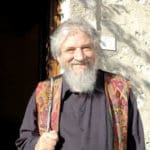
Many different Gurdjieff study groups formed after his death, but one of the most influential is the Arica training (named for a city in northern Chile) founded by Oscar Ichazo. Ichazo and Claudio Naranjo, a Chilean psychologist, [who] invented the enneagram of personality types in the late 1960’s. This admission by Naranjo in a 1991 speech in San Diego contradicts the claims that the enneagram is 2,000 years old or more. How could the Sufis, who began in the tenth century AD, invent the enneagram a thousand years before they existed? How could they invent a diagram based on the decimal point, which was invented around the fifteenth century AD, fifteen hundred years before that? Why do neither Gurdjieff nor any of his followers mention the nine personality types? The answer is simple: the enneagram of personality types was not invented until twenty years after Gurdjieff died.
Oscar Ichazo invented the enneagram of personality types in the mid 1960’s by placing the seven capital sins on the numbers of the circle. That left two other numbers, so he placed deceit on number three and cowardice on number six. In 1968 Claudio Naranjo visited Ichazo in Chile. He like the typing system and added short descriptions for each type. Over the last twenty-five years various authors have expanded the descriptions, made up prayer techniques for each type, and have published books and tapes.
What is wrong with the enneagram? Why is Fr. Pacwa so critical?
First, the claim of the enneagram’s antiquity is false, but it has been a device for not subjecting it to serious scientific scrutiny. It has been tested neither by time nor by psychologists. How do we know that it is true except for the claims of its inventors and teachers?
Second, because the enneagram is untested, there are no criteria to determine who is an authentic teacher or who is a hack. What are the credentials of the enneagram teachers offering workshops and retreats? Who approved of their abilities, except for themselves? How many courses did they take? From whom? I took one of the first courses ever offered, back in 1972. Quite a few “experts” were in the same course and learned no more about it than I did. Their continued research has often been conducted with unacceptable scientific methods. Neither the state nor we would accept such credentials from a psychologist; why do we accept it from someone who claims to teach about spirituality?
Third, many of the ideas and teachings of Gurdjieff and Ichazo are still taught by the Catholic enneagram “experts.” I heard from priests that original sin began at age three or four when kids choose a personality to cover their “essence.” I have heard them teach that we must do the work to return to this “essence.” Remember, this essence refers to the divine nature of the universe and person. Such a pantheistic notion contradicts Christianity. If the Catholic enneagram experts do not intend to teach pantheism, then what do they mean by essence?
Another false doctrine is that the nine types are nine demons, the nine faces of God turned upside down. In no way does Christianity teach that God has nine faces. Nor can humans turn God’s face upside down or right side up. Such mythology is nonsense. Christ taught that He came to die for sinners and reconcile them to God. He taught the forgiveness of sin and the need to repent and live the Gospel He taught. The grace of Christ is what makes possible the moral and spiritual transformation of our lives. In addition to finding out if the enneagram is psychologically true, its proponents must also teach solid, Biblically based doctrines about sin, redemption, grace and free will. Faith is not knowledge, as Gurdjieff taught, but a gift from God by which we accept what God has taught and by which we commit ourselves to God.
Anyone who attends enneagram workshops needs to learn whether the enneagram is true before using it. That work has not yet been done by the experts. Secondly, and much more importantly, there should be certainty about true Catholic teaching. No matter how true a psychology or personality system may be, if the truth about Jesus Christ, His Church, and His redemption of the world is not taught or is contradicted, the possibility of spiritual danger remains very serious. Each Christian has the duty to find out whether the teachings they are receiving are true.
I think by now the answer to your question is clear. If it is not, I can unequivocally say that I cannot conceive of any circumstance where I would trust a spiritual director who uses the enneagram. I also would not frequent a retreat center that allows it to be taught or used there. Usually, those well intentioned souls drawn to these kinds of things are also drawn to other pseudospiritual fads that are rooted in superstition and false teachings rather than the true faith and teachings of Church. Those drawn to these teachings are often so because they lack any depth of study in the real and substantive wisdom of the spiritual doctors of the Church. Because they lack in this area, they look for and leverage pseudo-solutions that often do more damage than good.
Editor’s Note: Click here for other posts in our Can I Trust? Series.
Art/Photography: Enneagram graphic provided by Dan Burke. Georges Gurdjieff, Janet Flanner-Solita Solano papers, 1925 and 1935 (?), PD-US; Claudio Naranjo, Alessandra Callegari, own work, 2007, CC-Universal Public Domain; both Wikimedia Commons.


